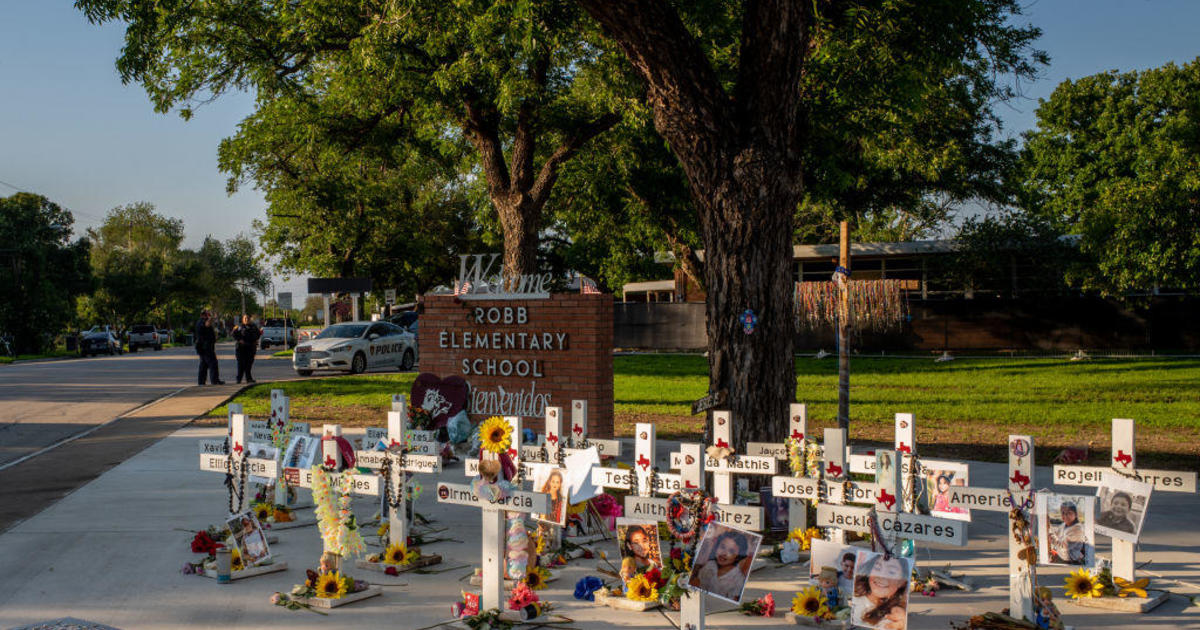As U.S. Customs and Border Protection personnel arrived on the scene of the deadliest school shooting in Texas history, none were able to find a map or keys needed to gain access to critical areas of the building, according to a federal report released Thursday.
While the 18-year-old gunman opened fire while barricaded inside a classroom of Robb Elementary School in Uvalde, Texas, only one of the 188 CBP law enforcement officers who responded had a halligan tool — a device capable of forcibly opening the locked door.
Amid the chaos, some victims with gunshot wounds were placed on a school bus without first receiving medical attention, the report said. The victims survived, but the report faulted officials for not providing them immediate medical treatment.
The revelations about the rampage, which resulted in the killing of 19 students and two teachers, were made public in a 203-page report that contained the findings of a two-year-long internal investigation by CBP’s Office of Professional Responsibility, the agency’s oversight branch.
CBP said its review was intended to evaluate whether its personnel followed the law in its response and to determine how the agency’s response could be improved if officers are asked to respond to similar incidents in the future.
In the absence of a strong incident commander, officers from the federal agency struggled to identify a leader on scene.
“No law enforcement official ever clearly established command at the school during the incident, leading to delays, inaction, and potentially further loss of life,” the report read. Without a command-and-control framework, investigators found responding personnel were tasked on an “ad-hoc basis” through requests from local law enforcement or their own initiative.
CBP found that officers who responded to the scene did not violate internal policy or the law, the agency said in a statement Thursday. Members of the Border Patrol Tactical Unit and the Border Patrol Search, Trauma and Rescue Unit were among the officers who located and killed the shooter in the classroom.
The agency said it has taken several actions in response to the probe. They include updating agency policies, expanding the pool of agency employees who receive active shooter response training and evaluating the need for additional tools like equipment to breach locked doors. Officials said they have also issued guidance to better collaborate with state and local law enforcement when responding to shootings and other similar incidents.
“As our report indicates, we are committed to, and working with our federal, state, and local partners to ensure that our brave officers and agents have effective training, policy guidance, equipment, and legal authority to respond to critical incidents,” acting CBP head Troy Miller said in a statement Thursday.
The Uvalde shooting created “immense logistical and tactical challenges that severely tested the resources and capabilities of responding officers and agencies,” the review said. It also determined that the agency’s existing training on active shooter response procedures “did not adequately prepare responding personnel to deal with this situation.”
The report found efforts to recover evidence by multiple investigative agencies — including the FBI and Texas Rangers — in the immediate hours following the shooting led to “fragmented crime scene processing.” Text messages used by CBP personnel during the incident were not obtained by the agency until months following the incident. “Coordination with other investigative entities could prevent this oversight in the future,” investigators added.
According to CBP, dozens of special agents worked on the investigation, reviewing thousands of hours of video and conducting over 200 interviews.
CBP’s report is the latest review to denounce authorities’ response to the Uvalde shooting. In January, the Justice Department released the findings on its own investigation, saying the response to the shooting highlighted “cascading failures of leadership, decision-making, tactics, policy, and training.”
Pete Arredondo, the former Uvalde schools police chief who was the de facto on scene commander during the shooting, was indicted on 10 counts of child endangerment and abandonment earlier this year stemming from his role that day. He has pleaded not guilty.

